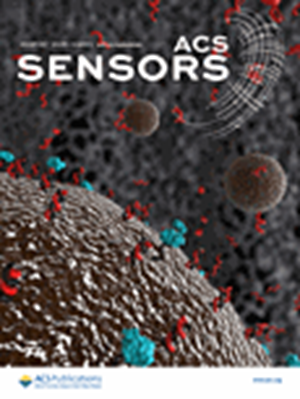Enhancement of Hydrogen-Sensing Properties of Pd-Modified WO3 Nanocubes via Tannic Acid-Assisted Surface Functionalization
IF 9.1
1区 化学
Q1 CHEMISTRY, ANALYTICAL
引用次数: 0
Abstract
The growing use of hydrogen as a clean energy source demands the development of efficient and reliable sensors to ensure safety. Traditional metal–oxide–semiconductors, particularly WO3, face challenges such as limited sensitivity, high operating temperatures, and slow response times. The present study explores the enhancement of hydrogen-sensing properties through the modification of WO3 with Pd nanoparticles utilizing tannic acid (TA)-assisted surface functionalization. Due to its branched molecular structure and inherent phenolic characteristics, TA plays a significant role as a mediator in facilitating the adsorption of Pd onto the surface of WO3. Furthermore, TA effectively prevents the agglomeration of Pd, a result of the unique growth patterns of TA observed during high-temperature pyrolysis. Optimal content of Pd and TA is 0.10 atom % and 0.25 g, respectively. The gas sensor of 0.25 g TA@WO3-0.10 atom % Pd exhibits remarkable sensitivity with a response value of 456, alongside a rapid response time of 1 s at 200 °C toward 500 ppm hydrogen. Additionally, the gas sensor demonstrates excellent stability and reproducibility over multiple cycles. The enhanced performance is attributed to the synergistic effect of the formation of oxygen vacancies increasing active sites, the uniform dispersion of Pd nanoparticles facilitated by TA, and the catalytic activity of Pd accelerating hydrogen adsorption and reaction kinetics. This research highlights the potential of ecofriendly materials to enhance hydrogen sensor performance for safety monitoring.

单宁酸辅助表面功能化增强pd修饰WO3纳米立方的氢敏感性能
氢作为一种清洁能源的使用越来越多,需要开发高效可靠的传感器来确保安全。传统的金属氧化物半导体,特别是WO3,面临着灵敏度有限、工作温度高、响应时间慢等挑战。本研究探讨了利用单宁酸(TA)辅助表面功能化的Pd纳米粒子修饰WO3,以增强WO3的氢传感性能。由于其支链分子结构和固有的酚性,TA在促进Pd在WO3表面的吸附中起着重要的中介作用。此外,由于高温热解过程中观察到TA独特的生长模式,TA有效地阻止了Pd的团聚。Pd和TA的最佳含量分别为0.10原子%和0.25 g。0.25 g TA@WO3-0.10原子% Pd的气体传感器具有显著的灵敏度,响应值为456,在200℃下对500 ppm氢的快速响应时间为1 s。此外,该气体传感器在多个循环中表现出出色的稳定性和可重复性。这种性能的增强是由于氧空位的形成增加了活性位点,TA促进了Pd纳米粒子的均匀分散,以及Pd的催化活性加速了氢的吸附和反应动力学。这项研究强调了环保材料在提高氢传感器安全监测性能方面的潜力。
本文章由计算机程序翻译,如有差异,请以英文原文为准。
求助全文
约1分钟内获得全文
求助全文
来源期刊

ACS Sensors
Chemical Engineering-Bioengineering
CiteScore
14.50
自引率
3.40%
发文量
372
期刊介绍:
ACS Sensors is a peer-reviewed research journal that focuses on the dissemination of new and original knowledge in the field of sensor science, particularly those that selectively sense chemical or biological species or processes. The journal covers a broad range of topics, including but not limited to biosensors, chemical sensors, gas sensors, intracellular sensors, single molecule sensors, cell chips, and microfluidic devices. It aims to publish articles that address conceptual advances in sensing technology applicable to various types of analytes or application papers that report on the use of existing sensing concepts in new ways or for new analytes.
 求助内容:
求助内容: 应助结果提醒方式:
应助结果提醒方式:


